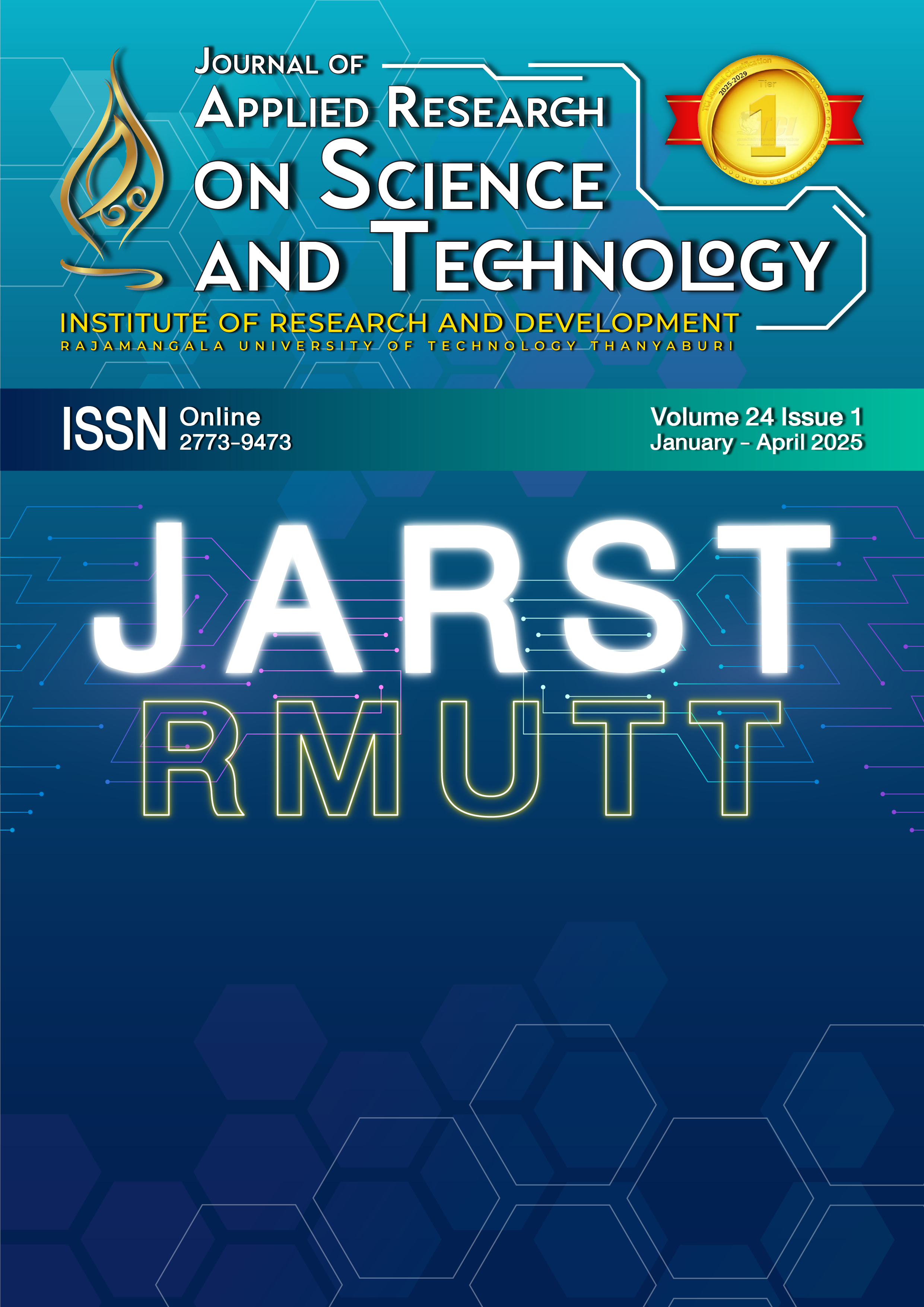Design of a two-seater seaplane wing spar structure with composite materials
Main Article Content
Abstract
A two-seater, mono-wing seaplane was initially developed for survey and rescue operations, with an empty weight of 470 kg and a maximum takeoff weight of 650 kg. Fiber-reinforced composite materials, consisting of fiber reinforcement and thermosetting polymer, were used in this airframe to reduce weight because the structural properties can be customized by adjusting the orientation of the fiber fabric layup and removing redundant material, which is impossible with metal. This paper presents a comprehensive overview of the design process for the aircraft's primary I-beam wing spar, employing composite material. Before conducting design calculations, it is critical to consider the variability of characteristics of composite materials caused by fabrication conditions such as temperature, humidity, and defects. As a result, it is imperative to conduct thorough testing of carbon fiber-reinforced composites following many different testing requirements. The coupon tests capture critical characteristics such as strength, stiffness, and Poisson's ratio across several orientations. The wing spar I-beam structure was subsequently developed with three primary considerations: stiffness (maximum deflection), strength, and stability (structural buckling). Following preliminary sizing of the I-beam wing spar, a simple initial layup was recommended, with primary loading in each component. The initial design was then subjected to a more detailed calculation using classical lamination theory, which took into account distributed load along the wing, spar taper, ply-drops along the span, and composite layup guidelines in order to reduce structural weight while ensuring the main spar's ability to withstand operational loads effectively. The calculating results show that the spar with an optimized composite design has a lighter weight than the original design by around 43%, while it can withstand the same loads with no analytical failure.
Article Details

This work is licensed under a Creative Commons Attribution-NonCommercial-NoDerivatives 4.0 International License.
References
Awad ZK, Aravinthan T, Zhuge Y, Gonzalez F. A review of optimization techniques used in the design of fibre composite structures for civil engineering applications. Mater Design. 2012;33:534-44.
Khames M, Embaby A, Agha A. Comparison between the Use of Aluminum and Composites in the Design of a Wing-Spar of an Airplane. MSF [Internet]. 2019;953:95-100. Availability from: https://doi.org/10.4028/www.scientific.net/msf.953.95.
Kennedy G, Martins JR, editors. A comparison of metallic and composite aircraft wings using aerostructural design optimization. 12th AIAA Aviation Technology, Integration, and Operations (ATIO) Conference and 14th AIAA/ISSMO Multidisciplinary Analysis and Optimization Conference; 2012.
Beukers A, Bersee H, Koussios S. Future aircraft structures: From metal to composite structures. In: Nicolais L, Meo M, Milella E, editor. Composite Materials. London: Springer; 2011. p. 1-50.
Kesarwani S. Polymer composites in aviation sector. Int J Eng Res. 2017;6(10):518-25.
Williams TS. Multifunctional polymers and composites for aerospace applications [Internet]. National Aeronautics and Space Administration; 2019 [cited 2024 Jun 15]. Availability from: https://ntrs.nasa.gov/api/citations/20190026444/downloads/20190026444.pdf
Naidu CG, Ramana CV, Rao YS, Rao KVP, Vasudha D, Anusha G, et al. A Concise Review on Carbon Fiber-Reinforced Polymer (CFRP) and Their Mechanical Significance Including Industrial Applications. In: Rahman MM, Asiri AM, Chowdhury MA, editor. Carbon Nanotubes-Recent Advances, New Perspectives and Potential Applications. 2023.
Rathod VT, Kumar JS, Jain A. Polymer and ceramic nanocomposites for aerospace applications. Applied Nanoscience. 2017;7:519-48.
McIlhagger A, Archer E. Polymer Composites in the Aerospace Industry. 3 Manufacturing processes for composite materials and components for aerospace applications. Woodhead Publishing; 2014. p. 53.
Fleuret C, Andreani AS, Lainé É, Grandidier JC, L'héritier S, Gorge AL. Complex wing spar design in carbon fiber reinforced composite for a light aerobatic aircraft. Mech Ind. 2016;17(6):614.
Daniel IM, Ishai O, Daniel IM, Daniel I. Engineering mechanics of composite materials. New York: Oxford university press; 1994.
Neotech Composites. Carbon plain [Internet]. 2023 [cited 2024 Apr 24]. Availability from: https://neo.co.th/en/products/item/Carbon-plain/carbon-plain.
RIGHT Composite. Fiberglass Cloth EW200 [Internet]. 2023 [cited 2024 Apr 24]. Availability from: https://www.rightcomposite.com/EW200-fiberglass-cloth.com.
Aditya Birla Chemicals. Epotec Epoxy Systems [Internet]. 2024 [cited 2024 Apr 24]. Availability from: https://www.adityabirlachemicals.com/pdf/Composite.pdf.
ASTM International. Standard Specification for Design and Performance of a Light Sport Airplane. ASTM F2245-20 [Internet]. 2020 [updated: 2023 Aug 08; cited 2024 Jan 25]. Availability from: https://cdn.standards.iteh.ai/samples/107349/078af7bc9da34bc1a892c35efed2c727/ASTM-F2245-20.pdf
Abbott R. Analysis and design of composite and metallic flight vehicle structures. 2nd ed. Collingwood: Abbott Aerospace SEZC Ltd; 2016.
Corke TC. Design of Aircraft. 1st ed. Pearson; 2003.
Hauffe A. ELAMX² [Internet]. Technische Universität Dresden; 2023 [cited 2023 Nov 30]. Availability from: https://tu-dresden.de/ing/maschinenwesen/ilr/lft/elamx2/elamx?set_language=en.
Latifi M. Engineered Polymeric Fibrous Materials. Woodhead Publishing; 2021.
Markit IHS. ESDU Catalogue 2017 Validated Engineering Design Methods. 2017.
Chinvorarat S, Watjatrakul B, Nimdum P, Sangpet T, Soontornpasatch T, Vallikul P. Static testing for composite wing of a two-seater seaplane. IOP Conf Ser: Mater Sci Eng. 2019;501(1):012026.


